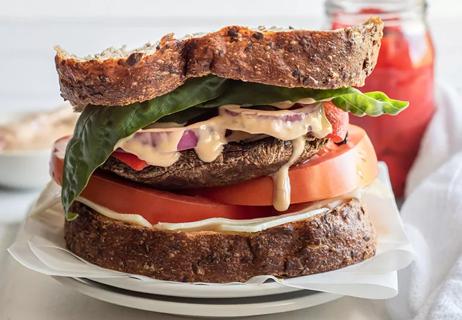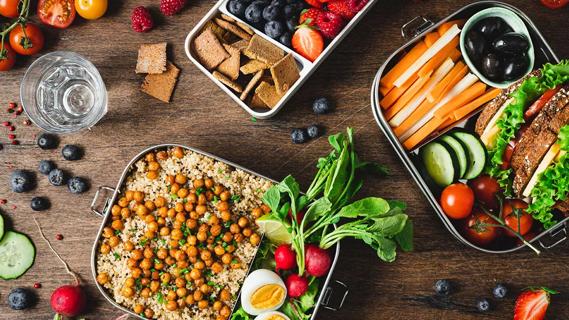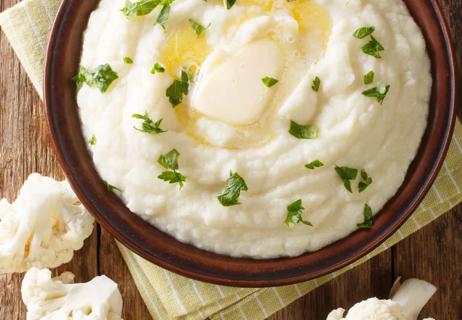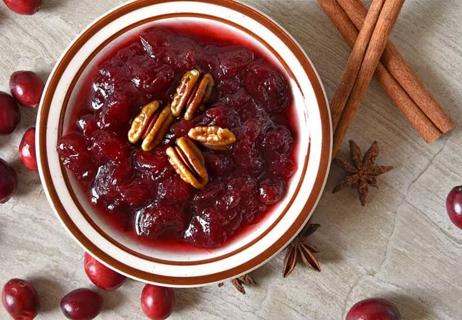Limiting sodium consumption can help you manage heart failure

“Heart failure” is as serious and life-threatening as it sounds. It’s the medical term for when your ticker can’t pump enough oxygenated blood to meet your body’s needs.
Advertisement
Cleveland Clinic is a non-profit academic medical center. Advertising on our site helps support our mission. We do not endorse non-Cleveland Clinic products or services. Policy
There isn’t a cure for heart failure. But what you eat can help you manage the lifelong condition and minimize its impact on your life. Basically, your choices at mealtime can help you stay active and healthier.
So, what food should and shouldn’t be on your plate? Registered dietitian Julia Zumpano, RD, LD, has some definite menu recommendations. (SPOILER ALERT: There’s a big focus on reducing sodium intake.)
Researchers estimate that more than 64 million people around the world are in various stages of heart failure. To put that in perspective, that’s a group nearly equal to the population of France.
Heart failure also stands as the leading cause of hospitalization for those aged 65 and older. Put bluntly, it’s a condition that often steals years off lives.
Given all of that, it’s no wonder some experts refer to heart failure as a global pandemic.
Successfully living with heart failure often requires immediate lifestyle changes, with dietary choices topping the list. Think of your meals as medicine. What you eat can help or hurt your weakened heart.
“Everything you eat affects your entire body, including your heart,” says Zumpano. “Making good dietary choices — especially when it comes to sodium — is critical if you’ve been diagnosed with heart failure.”
Advertisement
A bit of sodium is essential within your diet, as the mineral helps your body maintain fluid levels. “Consuming sodium helps your body absorb and hold onto the fluid it needs,” explains Zumpano.
But take in too much sodium, and you can retain excess water. If you have heart failure, that’s a big issue. Here’s why.
With heart failure, your struggle to adequately pump blood can lead to fluid buildup in your body. This excess fluid can be anywhere, from your arms and legs to areas around critical organs such as your lungs.
So, if you have heart failure and consume high amounts of sodium, you’re basically boosting fluid retention in a system that’s already flooding. That can send blood pressure numbers soaring.
“You’re putting extra strain on a heart that’s already having trouble keeping up,” says Zumpano.
But reducing sodium in your diet lessens extra fluid retention, which can take some pressure off your hard-working heart. Basically, it’s a way to help a compromised cardiovascular system.
Someone living with heart failure should try to limit sodium consumption to less than 2,000 milligrams (mg) per day, advises Zumpano. To put that in perspective, that’s less sodium than what’s in a teaspoon of table salt.
(Quick science lesson: Salt and sodium are often used interchangeably, but they’re different. Salt is a combination of sodium and chloride. Sodium, meanwhile, is just … well, sodium, and one of the most common elements on Earth.)
Does it make sense to cut back on drinking cups of water and other beverages if your body is struggling with too much fluid? Sometimes, says Zumpano.
“Some people with heart failure do need to restrict how much they drink because they’re holding onto so much fluid,” she says. “But not everyone needs to follow a low-fluid diet. It’s on a case-by-case basis.”
Zumpano recommends talking to your healthcare provider before cutting back on fluid consumption to address heart failure symptoms.
So, how do you cut back on sodium intake to slow the progress of heart failure? Zumpano offers 10 suggestions to ease the transition into a low-sodium diet.
Kind of obvious, right? Eliminating the habit of shake-shake-shaking salt onto your plate can bring an instant reduction in sodium consumption. (FYI, too: While sea salt and kosher salt are less processed than ordinary table salt, they aren’t low in sodium.)
Fresh herbs and spices can add flavor to meals without any sodium. But be wary of prepackaged spice and seasoning blends. “Salt usually gets mixed in with the herbs and spices — and the sodium adds up quickly,” notes Zumpano.
Advertisement
Food labels in the United States include a section that tells how much sodium is in a single serving of the food item. “My general rule is to try to keep that number below 140 mg of sodium,” says Zumpano. (Be mindful of what is classified as a serving size, too.)
“Take the time to read labels,” she adds. “The more you look, the more surprised you may be as to where sodium pops up.”
Food manufacturers have definitely noticed that there are millions of people looking to cut sodium — and they’ve responded with product offerings that can better fit within a low-sodium diet, says Zumpano.
Shelves are loaded with products labeled “Low Sodium” or “No Sodium.” Low sodium means that food has 140 mg or less of sodium per serving. No sodium means that food has less than 5 mg of sodium per serving.
Be cautious of foods labeled “lower, “reduced” or “less” sodium.” These products do offer lower sodium content than the regular version of the food, but that doesn’t mean they’re actually “low” when it comes to sodium content.
An example would be soy sauce, where a splash of the “reduced sodium” flavoring still may amount to a significant amount of sodium.
“This is where reading nutrition labels at the store becomes so important,” stresses Zumpano. “Be mindful of the milligrams of sodium that are actually in a serving — not just that it’s less than normal.”
Advertisement
If you’re wondering where to steer your grocery cart to find food low in sodium, Zumpano has a map: “I often suggest that you try to shop the outside of the grocery store, where you’ll find your fresh produce, fresh meats and fresh dairy,” she says.
Ideal foods to grab include:
Advertisement
The majority of sodium in the average American’s diet comes from processed foods and convenience foods. By some estimates, more than 70% of consumed sodium is added during commercial processing.
Check the labels and you’ll often see high sodium content in canned soups, luncheon meats, breads, pasta and rice mixes, frozen dinners, instant cereals, puddings and many, many more items.
“Sodium is one of the best ways to preserve convenience foods and extend their shelf life,” explains Zumpano. “It’s simple, inexpensive and effective, which is why so much of it ends up in processed food.”
Dodging this sodium comes down to spending more time in the kitchen cooking with fresh ingredients. Is that less convenient? Without question.
But eating smarter and healthier is key to living better with heart failure. “Adding a few steps to your food preparation process can help you eliminate a tremendous amount of sodium from meals,” encourages Zumpano.
Getting low-sodium food items into the house won’t help if you use high-sodium sauces, dressings and seasonings during preparation. Do an ingredient inventory of your fridge, pantry and cupboards to get a sense of what’s there.
“Take an extra look at what you’re using while cooking,” advises Zumpano.
And if you have a favorite recipe that includes salt, experiment and try reducing how much you use to minimize sodium content. Using a bit less often won’t seriously change the taste of the dish.
Let’s be realistic: Odds are you aren’t going to eat every meal at home. Grabbing a bite at a restaurant or hitting the buffet table at a party is part of life.
When you do eat out, look for more simply prepared foods. The more processed the food is, the more likely it is high in sodium. So, opt for a baked potato instead of mashed potatoes, or choose a side salad (dressing on the side) over a bowl of soup.
“Cut the sodium where you can while still finding joy in what you’re eating,” says Zumpano. “Every little bit helps.”
Reducing sodium in your diet can be difficult at first. As you make changes, it might help to keep a record of how much sodium you’re eating every day. You can write it down or use a meal-tracking app to make things easier.
“The idea isn’t deprivation,” notes Zumpano. “Look for adjustments you can make so you can enjoy the foods you want to eat while backing off of others. It’s about building knowledge about sodium so you can make the best choices.”
And as you make changes to your diet, your taste buds will adjust. (FYI: That’s a good thing!)
“Something that didn’t taste salty to you in the past will taste extremely salty to you after adhering to a low-sodium diet for just a week or two,” Zumpano continues. “It will help reinforce your good choices and it will become easier to follow sodium restrictions.”
An added bonus to better eating? High-sodium foods often are high in fat and calories, too, so you may drop some pounds after cutting back on items like processed meats, chips and snack foods, fried foods and breads.
Research shows that losing weight can ease stress on your heart and extend your life with heart failure, particularly if you have obesity.
Going low-sodium doesn’t mean you won’t eat fabulous food. In fact, your meals can be amazing while adjusting to help manage heart failure. Just consider this example of a one-day meal plan:
Breakfast
Lunch
Dinner
Snack
Note: For a diet in which you consume 2,000 mg of sodium per day, a sample plan might involve eating 300–400 mg at breakfast, 200 mg for snacks twice daily, 600 mg for lunch and 600–700 mg for dinner.
Learn more about our editorial process.
Advertisement

A satisfying veggie option with a kick

No more scrambling to figure out what to eat during your busy week

Set yourself up for success by carefully choosing your recipes, storage containers and prepping day

A colorful side dish to brighten any meal

A creamy mashed cauliflower that’s sure to please

Impress your Thanksgiving guests with this homemade treat!

These breaks may have some benefits — but they promote an unhealthy attitude toward food

Type 2 diabetes isn’t inevitable with these dietary changes

Applying a hot or cold compress can help with pain